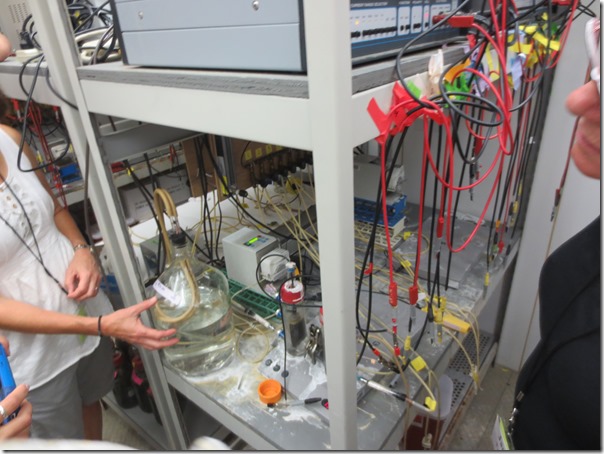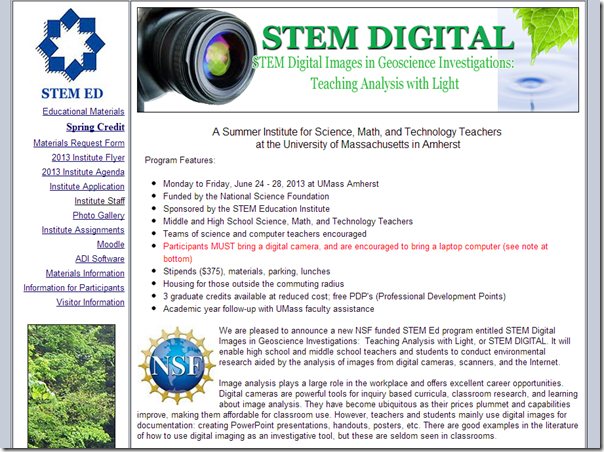Geobacter Setup in Morrill at UMass Amherst
We started day 3 of the Nanotechnology Institute by touring labs in Hasbrouck in which research involving nanostrucutres happens. The process of lithography was explained, which I have experience in the Class-100 clean room at the BU Biophotonics Building. One of the highlights of touring the laboratories was seeing the Atomic Force Microscope in action, imaging a series on nanotubes.
Atomic Force Microscope Setup
Atomic Force Microscope Output
The second tour we went on was in Morrill IV, and dealt with Geobacter in Derek Lovley’s laboratory. Dr. Nikhil Malvankar presented his research in regards to Geobacter and it’s practical uses in our society. One of the most interesting facets of this research is its potential uses in portable outhouses. It could potentially break down the waste, removing the smell, while creating power that could power a fan, sensors for how full the outhouse is, and light for use during the night. Furthermore, a sensor system could relay this information to the central hub of the waste company. You can study these bacteria in your classroom, using the Keegotech Mudwatt system.
Geobacter Presentation by Dr. Malvankar
We then learned about magnetic memory storage and created a binary coded alphabet exploring secret “coded” messages. This would be potentially useful in a physics classroom or intro computer class.
UMass has created a virtual clean room tour, which gives you an idea of what a clean room is like. Clean rooms are important when working on the nanoscale, because even the slightest bit of contamination can ruin your sample.
We then explored self assembly of items in a station like system. We went station to station, using wood shapes. There was particularly awesome set up with magnets floating in bottle caps in a small dish. When you put in like magnets, they repelled each other away to form an equidistant design. When you put in different magnets, they self-assembled into a shape. This activity will be a great way to demonstrate bonds in my classroom.
Mort Sternheim went on to talk about potential Nanotechnology Careers, and we met in subject groups and talked about what we envisioned our student’s preferences towards STEM careers.
Sediment Batteries



